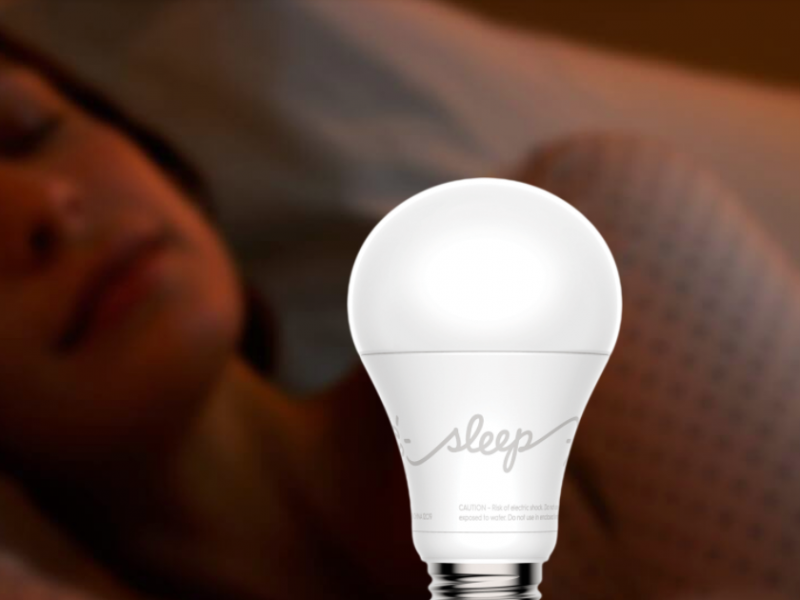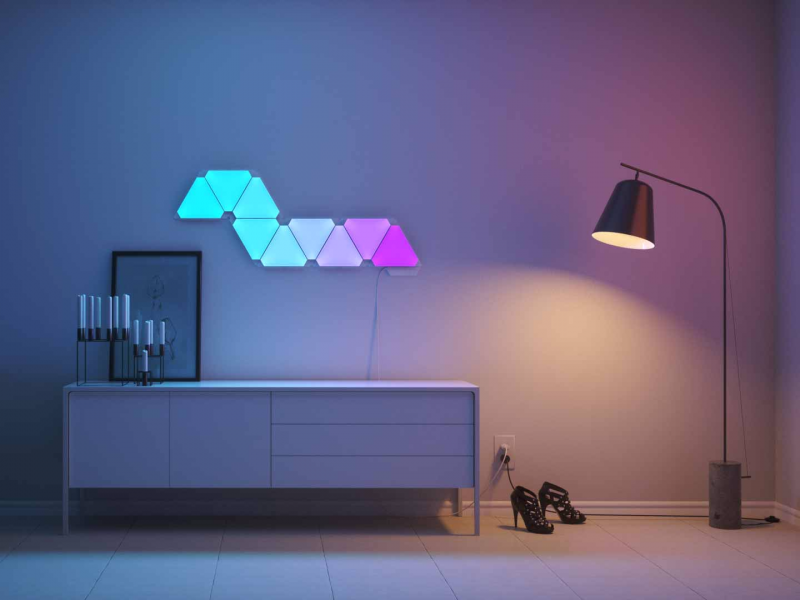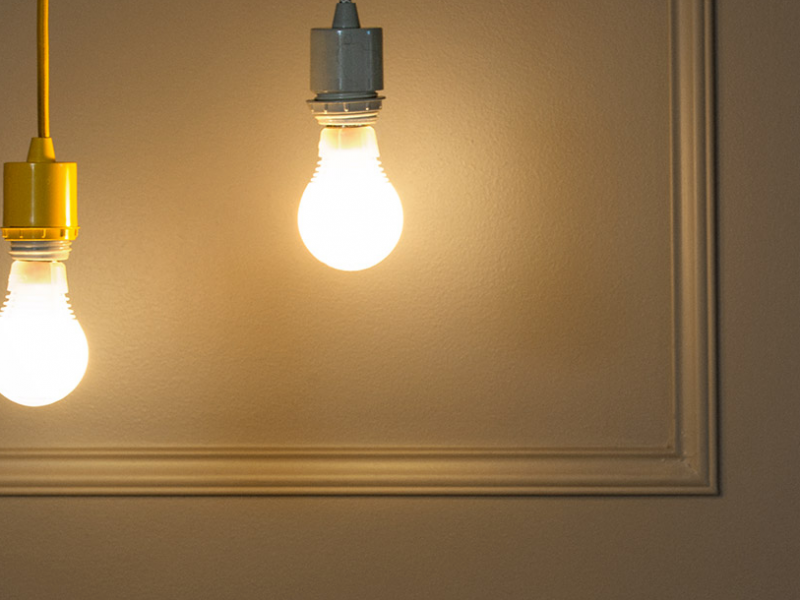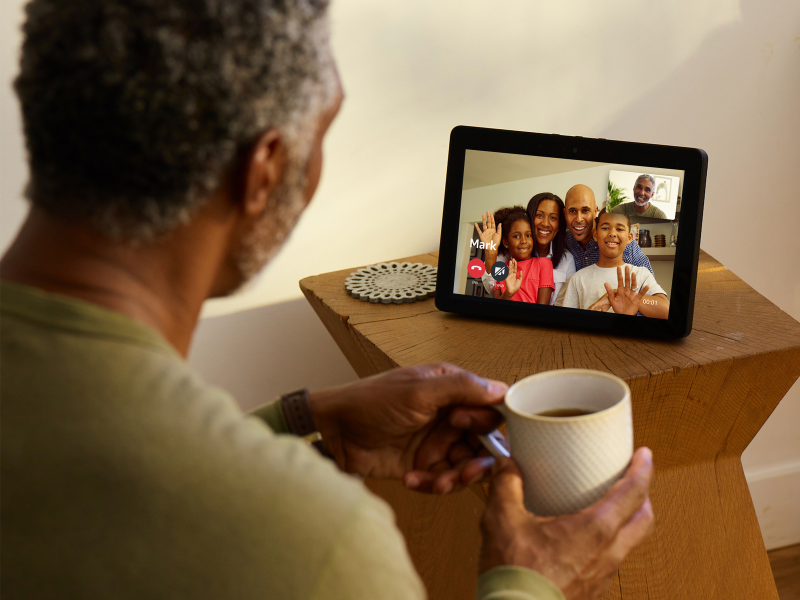- Smart light bulbs bring your home into the 21st century, allowing you to control your lights straight from your phone or with your voice.
- After much testing, it’s clear that the Philips Hue light bulbs are still the best ones you can buy because they are reliable, consistent, easy to use, and work remotely.
If you’re looking to smarten up your home, there are two things you can buy to get started. The first is a smart speaker with a smart assistant, like Amazon Alexa or Google Assistant. The second is a set of smart light bulbs. These two are the easiest and most affordable entryways into building a smart home, and a gateway to future smart devices like smart plugs, security cameras and sensors, door locks, etc.
When it comes to smart light bulbs, there are lots of different options available, with the most recognized ones being the Philips Hue bulbs. But before you settle on any particular brand, there are a number of things you should think about beforehand, especially if you plan on outfitting your entire home. Here’s a quick rundown of things to consider:
- Color or white: Smart light bulbs generally come in two flavors – color bulbs or white bulbs. White bulbs, as you might assume, really only turn on and off like your standard light bulb, while color bulbs can change colors. Of course, white bulbs are also generally cheaper than color bulbs because they are less technically complex to create. The nice thing about either is they’re dimmable.
- Connectivity: Most smart bulbs “talk” to a central hub (using a technology called Zigbee), which is then connected to a home’s network via Wi-Fi (wireless) or Ethernet (wired). But some smart bulbs use other routes: The C by GE bulbs work through Bluetooth, for example. So, what are the pros and cons? Wi-Fi connectivity means that you can control your bulbs anywhere you have an internet connection, so you can turn them on or off remotely with your phone even if you’re miles away. But as mentioned, you’ll need a separate hub, and each brand will require its own dedicated hub. Bluetooth bulbs can only connect to a phone within a certain range (approximately up to 33 feet), but the trade-off is that Bluetooth bulbs don’t require a hub and use less energy. Hub-based bulbs can work independently or as a collective and can be controlled by multiple users, while a Bluetooth bulb can only talk to one phone at a time.
- Smart home compatibility: Looking to integrate the bulbs with smart home platforms like Google Home, Amazon Alexa, or Apple HomeKit? You might want to check that your bulbs are compatible before you buy them. That way, you can control your bulbs with your voice, and your bulbs can interact with other smart devices in your home.
We tested several smart light bulbs to find the best ones you can buy. We picked bulbs at various price points and included some that don’t need a hub. The lights that have hubs do work better and more consistently. The hub also enables you to control your lights remotely, so we think it’s worth the price if you’re really serious about building a smart home.
You can also check out our guide to the best normal light bulbs if you’re not convinced that smart bulbs are for you. Read on to learn all about our top picks for the best smart light bulbs.
Here are the best smart light bulbs you can buy:
- Best smart light bulbs overall: Philips Hue Starter Kit
- Best smart light bulbs without a hub: LIFX bulb
- Best Bluetooth smart light bulbs: C by GE bulbs
- Best decorative smart lights: Nanoleaf Light Panel Starter Kit
- Best portable smart light: Philips Hue Go
- Best Zigbee smart light bulbs: Cree smart bulbs
Updated on 1/15/2020 by Jen Gushue: Updated prices, links, and formatting.
The best smart light bulbs overall
The Philips Hue light bulbs are easy to use and set up, and they are the most reliable bulbs we've tested.
Philips is arguably the most famous smart light bulb manufacturer, and for good reason. In our testing, not only were the Philips Hue light bulbs extremely easy to set up, but they were also easy to use and very consistent.
Perhaps the best thing about the Philips Hue bulbs is their versatility. You could go for the color-changing bulbs, which are a little more expensive, but there's also the option for the simple white bulbs, which are cheaper and could offer a better option for those looking to set up their entire home. No matter which set you buy, all Hue bulbs are dimmable and can be controlled remotely with the Hue app.
The light bulbs themselves output 800 lumens, which is more than enough for most small to medium-sized rooms, and while larger rooms could benefit from multiple bulbs, that's also true of your standard 60W light bulbs that your home may already be using. On top of that, they're relatively small, unlike bulbs from the likes of LIFX, so they'll be able to fit into most places that your average light bulbs fit.
You can also control the bulbs with your voice if you have Google Home, Apple HomeKit, or Amazon Alexa. It's extremely convenient when you don't want to go get your phone or your hands are busy. You can also control the lights using the respective apps for the aforementioned platforms. The bulbs also support both Bluetooth and Zigbee, which means you can use them with or without a Hue Bridge hub that's included in the starter kit.
There are a few downsides to using Philips Hue bulbs, including the high startup cost. The Hue Bridge hub will not support other brands' bulbs, even if they use Zigbee, but some Zigbee-certified hubs will support Hue bulbs. Of course, the upside to that is reliability and the ability to remotely control your lights, so it is well worth it.
We weren't the only ones who liked the Philips Hue smart bulbs - both CNET and Trusted Reviews rated them highly. Experts and buyers alike agree that these bulbs are the best ones you can buy. Having purchased and tested various smart bulbs, Guides Editor Les Shu eventually settled on Philips Hue for his home, citing the easy set-up and operation with both HomeKit and Alexa.
Pros: Reliable, versatile, easy to use, easy to set up, consistent, voice control, dimmable
Cons: Hue Bridge hub not compatible with other smart bulbs, a little pricey
The best smart light bulbs without a hub

LIFX's bulbs are easy to use and offer a ton of customization in the awesome app, but best of all, they work without a hub.
Interested in setting up your home with smart lighting but don't necessarily want to deal with a hub and the cost associated with one? LIFX's bulbs are probably your best bet.
LIFX has been around for a while now, and the company makes some excellent bulbs that can be set up completely hub-free. Simply screw the bulb in and follow the instructions in the app. The app is pretty easy to use, and it allows you to control bulbs individually or in groups to set scenes, schedule the lights to turn on and off, and even turn on effects like a strobe light for parties.
There are also a few different bulbs available, including the standard A19 bulb and the BR30 model, so you should be able to find the right bulb for most situations.
There are a few downsides to these bulbs. For starters, they're somewhat large, and because there's so much tech packed into each individual bulb, the cost for a bulb is a little higher than the Philips Hue, though these LIFX bulbs don't require a hub. We also found in our testing that at times the app could be a little buggy and not recognize when bulbs were on, though that was rare.
Budget alternative: We like the LIFX bulbs because they support Amazon Alexa, Google Assistant, and Apple HomeKit platforms. If you don't need HomeKit support, we recommend the Kasa smart light bulbs from TP-Link. We've had great success with Kasa bulbs, which work similarly to LIFX bulbs - no hub needed. A dimmable white bulb and a multicolor variant are both great affordable options. A dimmable soft white bulb and tunable white bulb (adjustable from soft white to bright white) are also available.
Pros: Excellent app, very bright, easy to set up, no hub required
Cons: Somewhat large, can sometimes have trouble connecting
The best Bluetooth smart light bulbs

The C by GE Bluetooth smart bulbs are easy to set up and use in the app, and they cost far less than Wi-Fi bulbs.
Looking for a bulb that connects through Bluetooth? GE has the solution for you: C by GE light bulbs. This starter pack comes with two bulbs, called C-Life and C-Sleep, and each is designed for different uses. The C-Life is for everyday use, and the C-Sleep is for use in the bedroom.
What's the difference between the bulbs? C-Life is really only a white color (if white can be a color), while C-Sleep offers three different settings: a cold light, to energize you in the morning, a normal white light, and a warm light to promote sleep at night.
Because the bulbs connect through Bluetooth and don't require Wi-Fi, they're pretty small and also relatively cheap, because you don't need to factor in a hub - great for homeowners who are just stepping into the smart lighting world and aren't yet ready to commit to a full lighting system. This two-pack is also less expensive than our hub-less Wi-Fi options, the LIFX and TP-Link Kasa bulbs.
The trade-off is that you have to be within Bluetooth range - 10 meters or 33 feet - to use the bulbs, so forget about using them while you're out of the house or even at the other end of the home. That can be a real problem for some users, especially those who want to really turn their home into a smart home. You may also run into connectivity issues.
Still, that doesn't mean you shouldn't go for these bulbs. The app is quite easy to use - although perhaps not as easy as Philips and LIFX - and the C By GE bulbs represent a great introduction to smart lighting.
The C by GE Life and Sleep bulbs also support Google Assistant, no hub necessary. With a device like a Google Nest Mini, you can control the bulbs with your voice or remotely. If you're looking to expand the C by GE bulbs' capabilities, connect them to the C by GE smart plug, which adds support for Amazon Alexa and Google Home, as well as away-from-home control.
Pros: Cheap, easy to connect
Cons: Limited color options, app could be more user-friendly
The best decorative smart lights

The Nanoleaf's smart lighting system is a work of art that you can customize to suit your desires.
Looking for some smart lighting that bucks the trend of standard screw-in light bulbs? The Nanoleaf Light Panel kit not only serves as a great way to bring some light into your home, but it can be configured to suit your home's color scheme and set up in shapes to really accent the room.
The Nanoleaf lights are flat triangles, and you essentially connect a series of them together to create fun shapes on your wall or any other surface. It's available in a starter kit with nine lights, as well as an expansion pack with three more lights. Simply attach the lights to the wall, boot up the app, and go through setup. Then, you can set each light to a different color, all to the same color, or set effects. You can control them with Amazon Alexa, Google Assistant, or Apple HomeKit.
Of course, as cool as these lights are, they may not be as practical as standard smart light bulbs, and they won't necessarily fit in every home as standard light bulbs will. In our testing, we found that the app could also only connect with the lights when on the same network, which might be a problem for some. Still, those things don't make these lights any less cool when they're mounted on the wall.
In our testing, the Nanoleaf lights were extremely easy to use, and while it often took a few seconds to connect, once they were connected, the app was a pleasure to use. CNET and TechHive both gave the lights 4 out of 5 stars.
Pros: Unique, decorative, easy to use
Cons: Requires a home network, not as practical as standard light bulbs
The best portable smart light

The Philips Hue Go offers all the advantages of a standard Philips light, but it also adds portability, too.
This is the second Philips light to show up on this list, but for good reason. Philips's Hue lighting system is arguably the best smart lighting system out there, but if you go for Philips you don't have to stick with stuck-in-place lights. Philips also offers the Hue Go light, which is a light you can take with you around the house, rather than keeping it in one spot.
The light itself plugs in through a standard power outlet, but it also has a built-in battery that can power the lamp for up to three hours, so if you want to unplug it and take it to the living room for a few hours, you can do so. That battery life isn't long, and you'll probably want to recharge it after each use, but if you're good at charging things up, you shouldn't have too much of an issue.
Like other Hue products, the Hue Go is easily set up in the app, where you can tweak things like colors, brightness, and so on.
It's important to note that this light isn't necessarily meant to be taken on a camping trip. It still connects through Wi-Fi via the Hue Bridge hub, so it's really aimed at being an in-home light - one that can quickly and easily be taken anywhere in the home.
Pros: Portable, easy to use, not overly expensive
Cons: Requires home network
The best Zigbee smart light bulbs

The Cree smart bulbs connect to your smart home hub through Zigbee, and the best thing about that is that they're inexpensive.
Cree's smart light bulbs are not as well-known as the likes of Philips or LIFX, but its bulbs have a lot to offer. Why? Well, the bulbs connect through Zigbee - so if you have a compatible smart hub, you could set up your home with these smart bulbs at a fraction of the cost.
The reason the bulbs are so inexpensive is that they don't need Wi-Fi radios built into them, and the technology they do need is much more basic. So long as you have a Zigbee hub like the ones from Wink, WeMo, or Samsung's SmartThings, the bulbs will connect to it and you'll be able to control the bulbs from your phone.
Note that not all Zigbee hubs are compatible. The Philips Hue Bridge is a Zigbee-compliant product but it only supports Philips Hue bulbs.
The Cree bulbs are also dimmable, which is great for those of you who want to set different scenes and lighting profiles. The companion app is relatively simple, and if you already have a Zigbee-friendly hub, these bulbs are a very cost-effective alternative to our top pick, the Philips Hue.
Pros: Inexpensive, work with SmartThings and Wink, Zigbee compatible, affordable
Cons: White only, needs hub
Check out our other smart home guides

The best smart displays
Smart displays can be used to control your smart home while offering visual, on-screen controls. On top of that, they can show you things like the weather and upcoming appointments that you might have on your calendar. These are the best smart displays you can buy.
The best smart speakers
Smart speakers can do a number of different things, including answer questions, control smart home devices, set alarms, play music, and more. Whether you're a loyal Google fan or an Amazon fan, these are the best smart speakers for your home.
The best smart doorbells
These days, doorbells can connect to your Wi-Fi network to offer enhanced home security with built-in cameras and microphones. You can even interact with people at the door when you're not home. These are the best smart doorbells you can buy.
The best smart outlets
With the ability to remotely control home electronics and appliances, smart outlets are a smart-home component that smartens up any dumb device, letting you "talk" to it from almost anywhere - through an app on a phone or with a command to a voice assistant ("OK, Google, turn on the coffee maker"). These are the best smart outlets.
The best smart locks
Home security is a big focus for tech companies. From smart security cameras to smart doorbells, connected technology can allow you to keep a much closer eye on your home. But what about your actual door? It turns out that there are a ton of great smart locks that you can install in your front door. These are the best.











